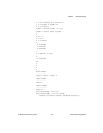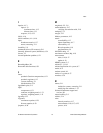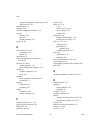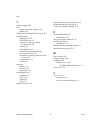Index
Xmath Control Design Module I-2 ni.com
converting to continuous
equivalent, 2-19
from a continuous system
(example), 1-18
discrete-time Riccati equation, 6-25
discretize, 2-13
discretizing a system
backward rectangular method, 2-14
forward rectangular method, 2-14
hold equivalence methods, 2-15
pole-zero matching, 2-15
trapezoid method, 2-14
Tustin’s method, 2-14
using ztransform for zero-order hold, 2-15
with exponential keyword, 2-16
documentation
conventions used in the manual, iv
NI resources, B-1
domain, regular, 4-11
drivers (NI resources), B-1
duality, 6-6, 6-9, 6-10
principle, 6-14
dynamic system, 6-32
appending systems, 3-6
frequency response, 5-5
improper, 3-4
impulse response, 4-13
indexing, 2-12
size, 2-12
E
eigenvalues, 4-2, 6-6
generalized solver, 6-26
encirclements, 5-15
equilibrium state, 6-30
error covariance, 6-19
estimator, 6-5, 6-16, 6-20
optimal, 6-18
estimator system, 1-17
examples (NI resources), B-1
expectation operator, 6-17
exponential discretization method, 1-19, 2-16
F
feedback, 3-11
constant gain, 3-8
full-state, 1-13, 1-22
loop, 3-11
single input syntax, 1-9
using second input to create negative
feedback loop, 1-10
filters, 5-20
Fourier transform, 5-20
freq, to find values of a transfer function at one
frequency, 1-10
frequency response, 1-19, 5-5
calculating, 5-5
open-loop, 5-14
full-state feedback, 1-13, 1-22
G
gain margin, 5-8, 5-9, 5-12
general interconnection around a system, 3-8
generalized eigenvalue solver, 6-26
grammians, 6-30, 6-33
graphics window, 5-3
H
helicopter hover problem, 1-4
ad hoc approach, 1-4
discrete formulation, 1-4, 1-18
state feedback and observer design, 1-4,
1-13
help, technical support, B-1


















